Sometimes People Will Try Anything…
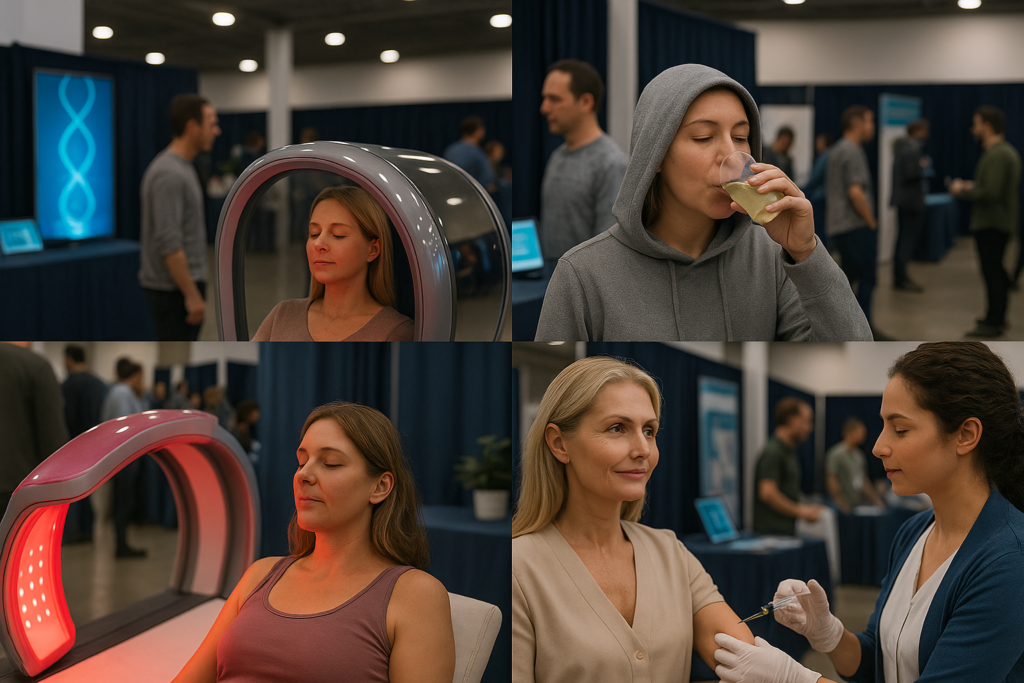
Some people age gracefully. Others age loudly, armed with syringes, red light beds, and a blender full of raw organ meat. Welcome to the wild world of modern biohackers, an underground (and increasingly above-ground) movement where aging is seen not as a natural process but as a personal failure. Forget moisturizers and multivitamins. These self-styled longevity rebels are injecting snake venom, fasting for days, and swapping hormone pellets at hotel bars, all in the name of living longer, stronger, and more intensely.
At the center of it all is MAHA: Make America Healthy Again. Part wellness crusade, part anti-establishment rally, it has become a banner for those who believe medicine has lost its way and that the only path to proper health is through self-experimentation, discomfort, and complete biological autonomy. Aging, they insist, is optional. And nothing, not even urine therapy, is off the table.
What Is Biohacking, Really?
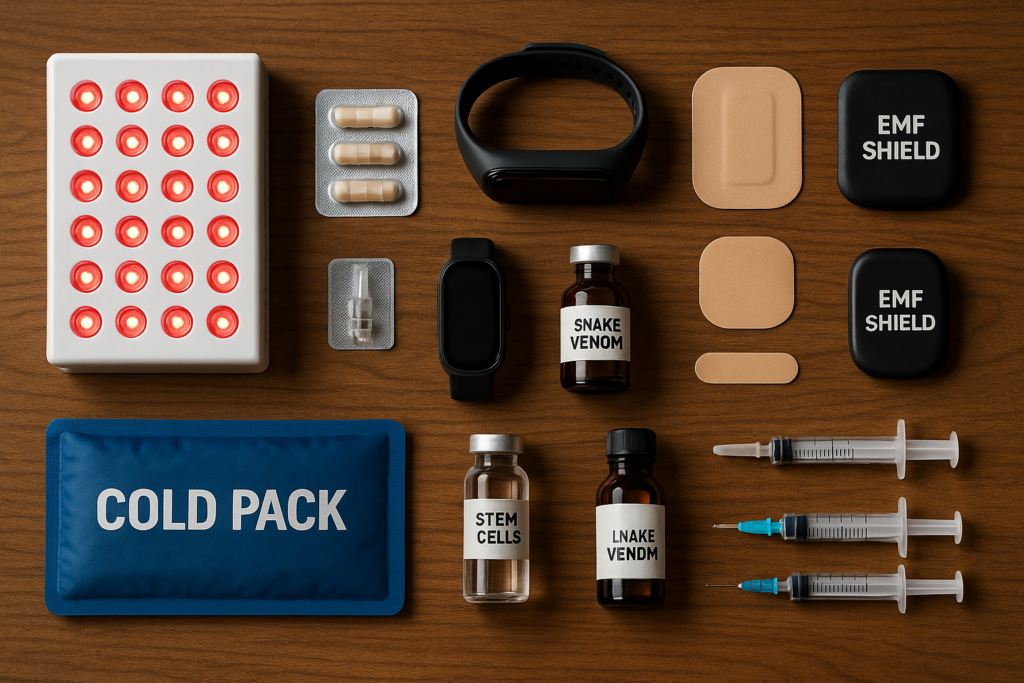
Biohacking is the belief that your body isn’t just something you live in; it’s something you can reprogram. For some, that means leveraging the latest in wearable tech, blood tracking, and microdosing vitamins. For others, it means fasting for days, injecting stem cells, or sleeping in red-light beds that promise to reverse your biological age. It’s a unique blend of science, wellness, self-help, and rebellion. Biohackers treat aging like a bug in the code, something to be debugged and redesigned. They follow lab results instead of doctors and Reddit threads instead of prescriptions. Some are tech execs chasing performance. Others are health dropouts who have lost faith in the system and have built their own protocols from scratch.
At its core, biohacking is about personal control. It’s about understanding your body’s unique needs and optimizing them to achieve optimal health. Control over inflammation, hormones, mental clarity, energy, and even death itself. It rejects the idea that aging just “happens.” Instead, it reframes the body as a machine, something that can be upgraded, restored, and even rebooted. No two regimens look alike, reflecting the individuality of each biohacker. Some use spreadsheets to track their progress. Others rely on intuition and TikTok for inspiration. The only rule is to experiment, observe, and tweak until you find what works. For this crowd, optimization is the new religion.
1. MAHA Summit
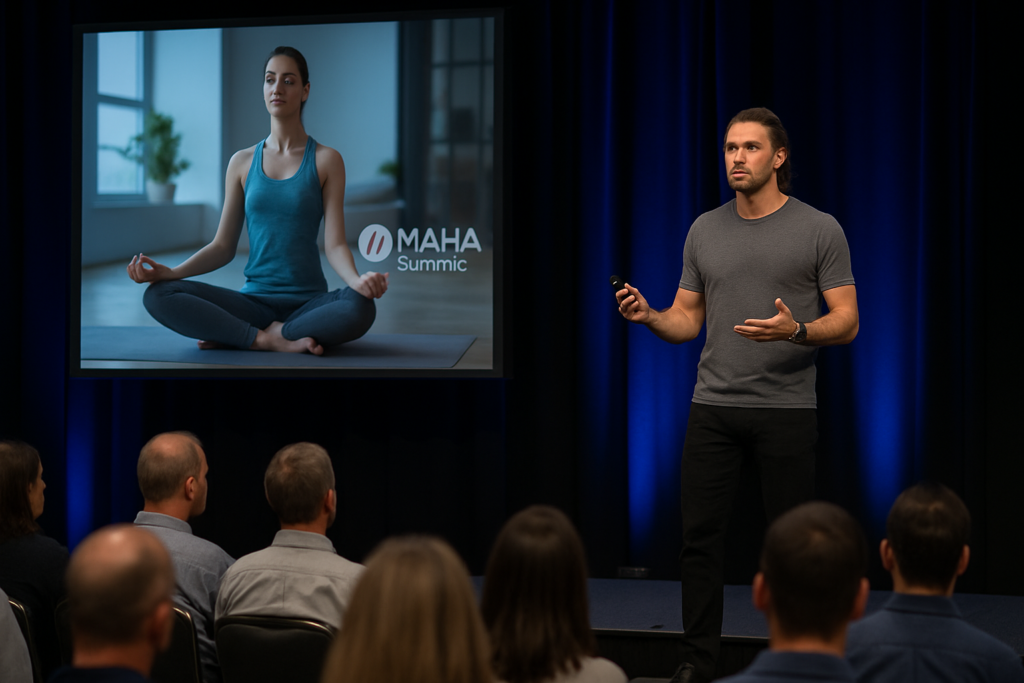
It wasn’t your typical health conference. At a hotel just outside Austin, nearly 700 people packed into a glowing ballroom for the Make America Healthy Again (MAHA) Summit, where aging was treated not as fate but as a glitch to be hacked. Attendees sipped mushroom coffee, compared peptide stacks, and browsed booths offering gene therapy kits and infrared helmets. The message was loud: age is optional if you’re bold enough to fight it. A former tech exec gave a keynote in bare feet. Another guest meditated in a cryo suit between panels. There was no dress code, just an unspoken rule to challenge everything you’ve ever been told about your body.
The tone felt part TED Talk, part spiritual revival. Instead of applause, there were primal screams and high-fives over blood test results. Talks with titles like “Unleash Your Inner Cells” and “Biological Freedom Now” filled every seat. Some came seeking solutions; others came to wage war against Big Pharma, outdated thinking, and the passage of time. For this crowd, aging wasn’t a natural process. It was propaganda. MAHA wasn’t just a brand. It was the flag of a biological rebellion.
2. Snake Venom
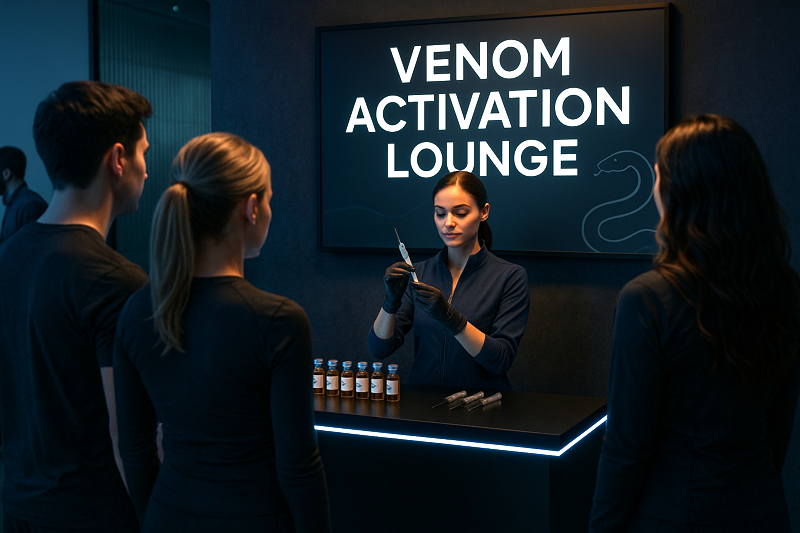
At a table near the back of the expo hall, a man in aviators stood over a cooler filled with syringes and tiny vials marked “SVP.” That stood for snake venom peptides, and yes, people were actually lining up to inject them. One man in his thirties said he felt like his cells were doing push-ups afterward. The idea, according to the vendor, was that tiny amounts of synthesized venom could shock the body into a healing mode, triggering collagen production, improving elasticity, and accelerating cellular turnover. It wasn’t exactly comfortable. One woman said she got lightheaded and then felt amazing. Another said she felt amazing and then threw up. The variety of experiences highlighted the unpredictability of the trend.
There were no doctors, just a handwritten sign that read “Train Your Cells to Survive.” The whole setup felt somewhere between a wellness booth and a dare. Some people returned for their second doses later in the day, reporting that they could feel their skin tightening and their focus sharpening. Whether it was science or suggestion didn’t seem to matter. People weren’t here to play it safe. They were here to outsmart time, one sting at a time, despite the potential risks involved.
3. Urine Therapy

In a quiet corner near the stairwell, a folding table held a few mason jars filled with a pale yellow liquid that was unmistakable. A handwritten sign read “Shivambu,” and the woman behind it beamed as she explained that she drinks her own urine every morning. She said it helped clear her skin, reset her gut, and gave her a kind of glow that no store-bought serum could touch. A few others nodded along and shared their own routines, which included urine eye drops and facial soaks. One man in his seventies swore it cured his acid reflux. Another said it helped him “break his addiction to water.”
There were no samples, but there were plenty of instructions. First-morning urine only. Hold it under the tongue. Mix with distilled water for beginners. The group spoke with calm certainty, like they were sharing a family recipe. Doctors would call it unsanitary or even dangerous, but that didn’t faze them. “This is what your body makes when it knows what you need,” one follower said. In a place where bee stings and snake venom were normalized, urine was just another tool in the kit. Strange, yes, but not even close to the most bizarre thing happening at MAHA.
4. EMF Shields

You could spot them instantly. The ones in silver-thread hoodies, metallic mesh scarves, and weird hats that shimmered under the expo lighting. These were the EMF blockers, convinced that invisible waves from Wi-Fi, cell towers, and Bluetooth devices were accelerating aging and disrupting their sleep. One guy wore copper wire woven into his socks and said he hadn’t had a migraine in months. Another had a cellphone pouch lined with tinfoil and called it “my force field.” Most mainstream scientists would roll their eyes, but here, they were met with curiosity rather than judgment.
Vendors sold canopies that draped over beds like ghost nets, promising a more “natural” night’s rest. Others offered pendants to shield your pineal gland or boxy devices that “harmonized” your home. No one expected proof. What they wanted was control over their environment, their energy, and the aging process. “You don’t need to see something to feel it,” one woman said, tucking her phone into a Faraday pouch. Whether it was physics or a placebo didn’t really matter. At MAHA, belief was half the battle.
5. DIY Stem Cells
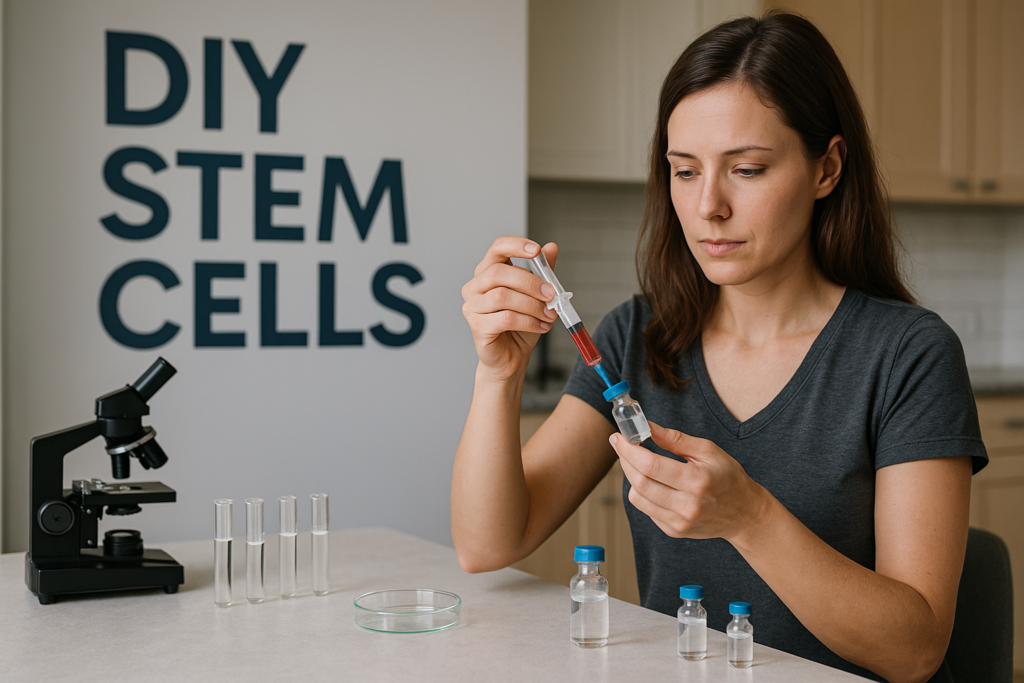
Not everything at MAHA was out in the open. Late at night, inside rooms and hallway huddles, people whispered about stem cells. Some were ordering vials from sketchy international labs. Others had connections to clinics in Mexico or Panama, where the rules were looser. A few even brought their own supply in insulated lunch boxes. One man reported that he injected stem cells into his knees every six weeks and claimed it had reversed his arthritis. Another admitted he didn’t really know what was in his last batch, but it “felt right.” These personal anecdotes bring a human element to the underground use of stem cells at MAHA, making the audience feel connected and empathetic towards the individuals involved.
No booths were advertising it, but everyone seemed to know someone who was doing it. The conversations were half science, half confessional. What to mix it with? How to store it? Which syringes bruise the least? They weren’t chasing a cure. They were chasing youth on a cellular level. At MAHA, you didn’t wait for permission. You experimented first and figured out the risks later, highlighting the experimental nature of the underground use of stem cells at MAHA and making the audience feel intrigued and fascinated.
6. Hyperbaric Chambers
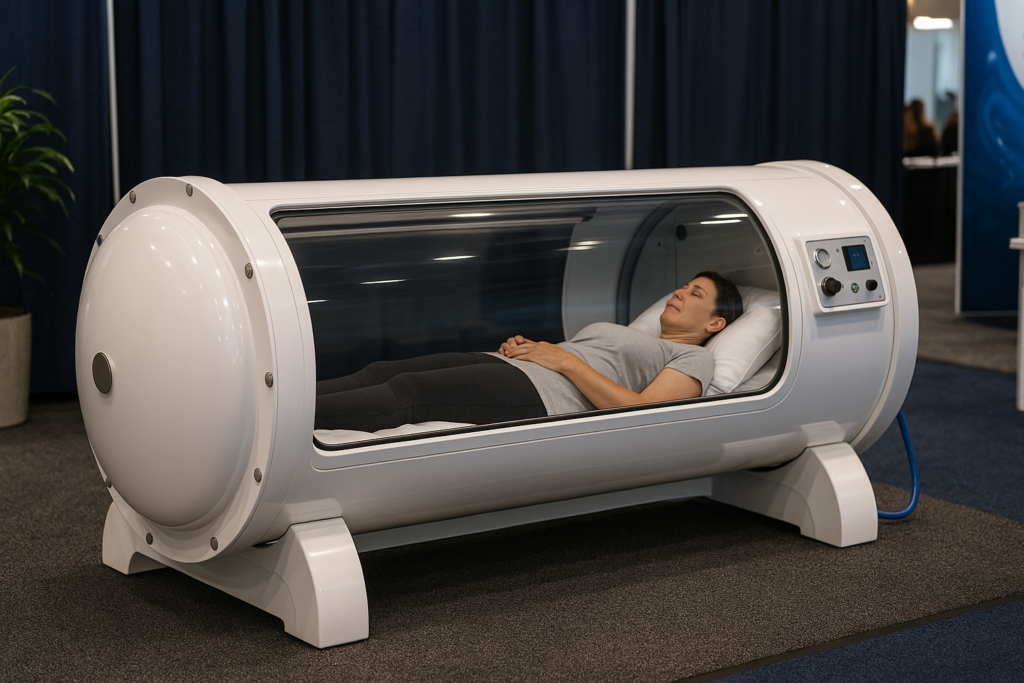
Tucked between a cryotherapy booth and a neurofeedback station was a glowing white pod that looked like it belonged on a space station. This was a hyperbaric oxygen chamber, and the pitch was simple: breathe pure oxygen under pressure, and your cells start to regenerate. The vendor claimed it lengthened telomeres, boosted brain clarity, and even improved skin elasticity. A woman in her fifties said she did three sessions a week and hadn’t felt this sharp since her twenties. A man in tech gear said it helped him recover from workouts “before the soreness even starts.”
The science behind it is still up for debate, but interest was sky-high. People lined up for demo sessions, eyes closed, headphones on, hoping for a little cellular magic. Some attendees compared it to meditation. Others called it “a spa day for your DNA.” Whether it was a placebo or the real thing didn’t seem to matter. For this crowd, if something promised to roll the clock back, they were willing to lie in a tube and find out.
7. Bee Stings and Ice Baths
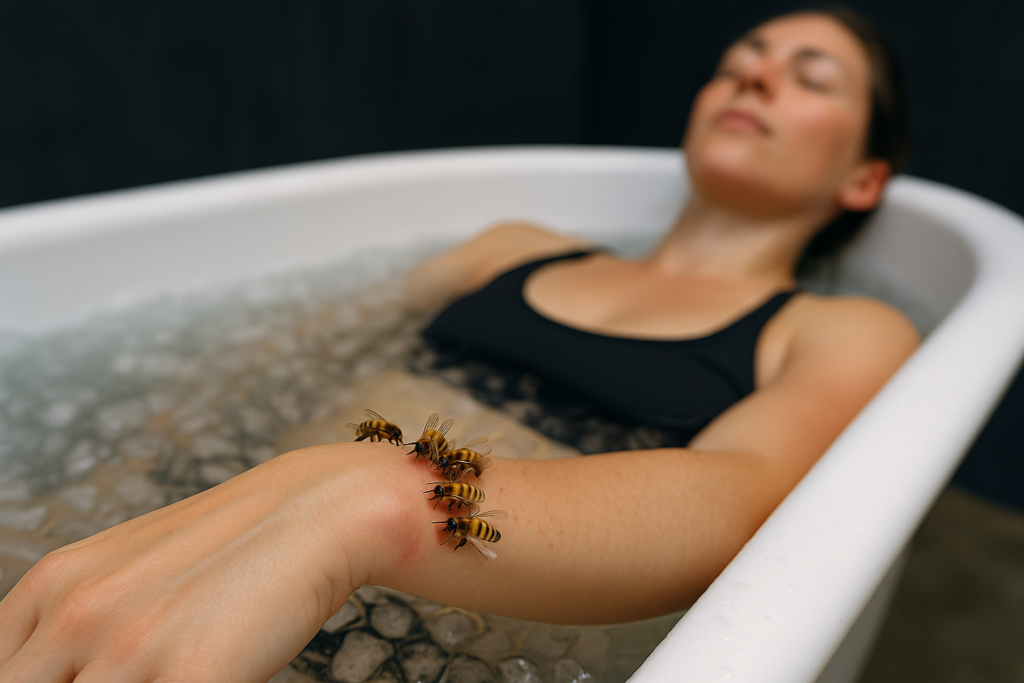
She stood barefoot on the carpeted stage, wrapped in a towel, fresh from a mobile ice tub parked outside. Her daily ritual, she said, involved plunging into freezing water for five minutes, then stinging herself with bees—yes, bees—along her spine and wrists. The cold was for inflammation, and the venom was for immune activation. “You don’t stay soft when your body thinks it’s under attack,” she told the crowd. She carried her own bees in a mesh pouch and said she could feel her nervous system sharpen with each sting. One attendee asked if it hurt. She smiled and said, “Of course. That’s the point.”
Apitherapy has roots in traditional medicine, but here, it felt like bio-warrior training. She credited it with clearer skin, fewer colds, and a level of mental clarity she hadn’t had since her twenties. Some in the room looked horrified. Others scribbled notes. Pain, she explained, was her body’s signal that it was functioning properly. Comfort was the enemy. At MAHA, if it didn’t hurt a little, it probably wasn’t helping.
8. Dry Fasting

While intermittent fasting is now fairly mainstream, a small but vocal group at the summit took things much further with a practice called dry fasting. That means no food, no water, not even brushing your teeth for at least 24 hours, sometimes longer. Advocates claimed it forces the body into deep cellular cleanup, burning damaged cells and boosting stem cell production. One man proudly said he dry fasts for 72 hours every month and hasn’t been sick in years. Others compared it to “hitting reset” on the body, much like unplugging a router to improve its performance.
Medical professionals warn that going without water can lead to kidney strain, dehydration, and even organ damage. But for these attendees, the risk was just part of the protocol. They described it as a sacred discipline, not just a diet. Some combined it with silence, meditation, or isolation to deepen the effects. One woman called it the most spiritual thing she’s ever done. In the MAHA world, dry fasting wasn’t about weight loss. It was about purification, power, and pushing beyond what the body is “supposed” to need.
9. Hormone Therapy
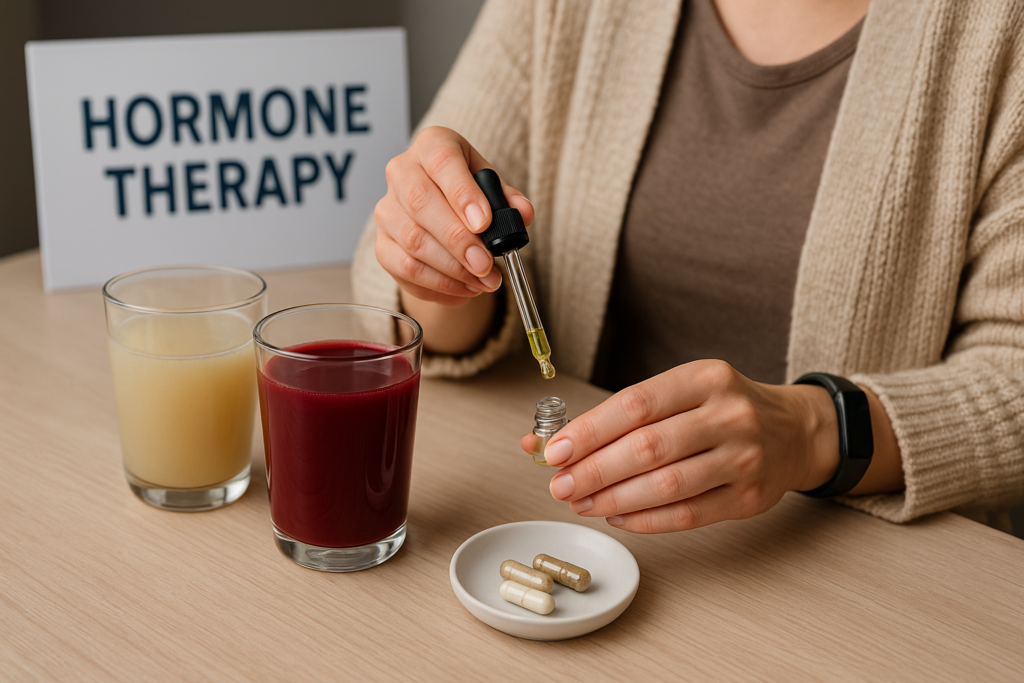
While some people came for the lectures, others came to trade hormone protocols over bone broth and beet juice. Conversations about testosterone levels and estrogen balance flowed just as freely as mushroom coffee. One man proudly said he had the testosterone of a 25-year-old, thanks to a tiny pellet implanted near his hip every few months. A few women compared notes on compounded creams and sublingual drops to “keep everything firing.” These weren’t prescriptions handed out in clinics. Many were sourced from wellness doctors willing to ship across state lines or from compounding pharmacies overseas. Everyone had a spreadsheet. Everyone had a theory.
It wasn’t just about libido or muscle tone. For this crowd, hormones were the code to rewrite how their bodies aged. One woman said balancing her progesterone gave her energy she hadn’t felt in a decade. Another swore by a custom blend she injected twice a week, timed to her circadian rhythm. No one mentioned risks. They were too busy chasing optimization. If aging was a slow fade, hormone therapy promised to punch the lights back on.
10. Red Light Therapy
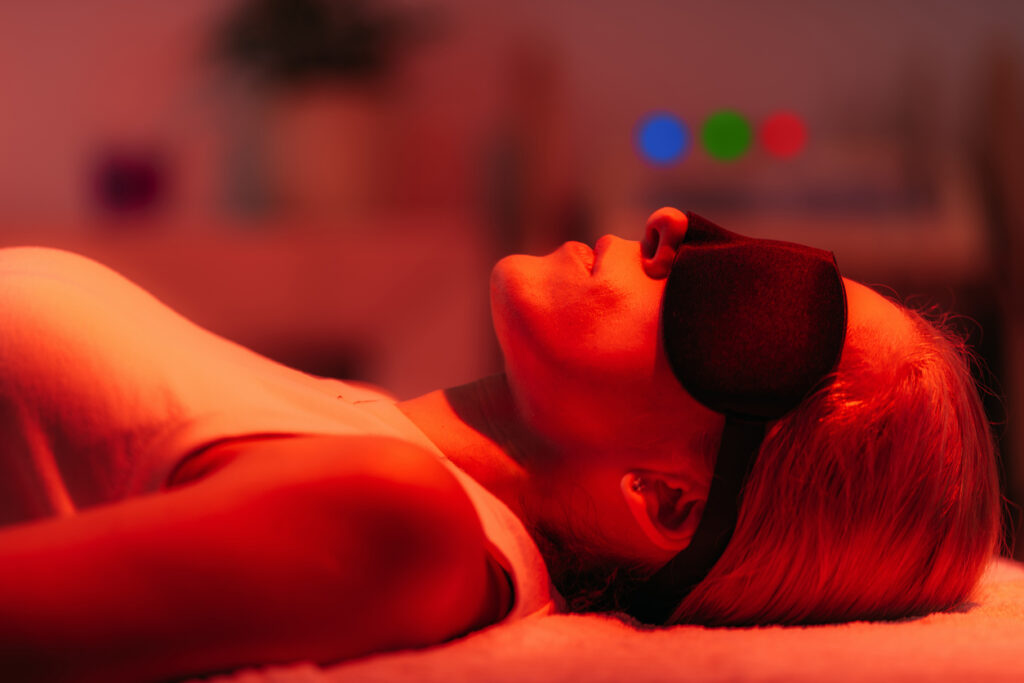
It looked like a tanning bed from the future, sleek and glowing red, surrounded by believers waiting for their turn. The pitch was simple: fifteen minutes under red and near-infrared light could wake up your cells, boost collagen, smooth skin, and sharpen brain function. One woman said she stopped needing concealer after just two weeks. Another man claimed it helped with anxiety, sleep, and “vibrational clarity,” whatever that meant. Some brought their own peptide patches to wear during sessions, convinced it would enhance the effect. You didn’t need proof. You just needed to feel it.
Vendors called it “youth in a capsule,” and almost no one questioned the label. Red light therapy has been studied for wound healing and inflammation, but the people here used it like a magic portal. Some lay inside and meditated. Others journaled or played frequency music through bone-conduction headphones. The beds weren’t cheap, but that only made them more desirable. To this crowd, anything that made you glow from the inside out was worth chasing.
11. Big Pharma Backlash

By day three of the summit, it was clear who the real enemy was. Speaker after speaker took the mic to call out the pharmaceutical industry, accusing it of keeping people sick just enough to stay profitable. Slideshows displayed graphs of rising prescription rates alongside shrinking lifespans. One presenter held up a statin bottle and called it “a leash.” Another compared daily meds to nutritional handcuffs. The audience didn’t just clap, they stood up and cheered. For this group, aging wasn’t a natural process. It was manufactured.
They weren’t just angry. They felt betrayed. Many had stories about being dismissed by doctors or pushed toward pills when they wanted answers. MAHA gave them something else, a sense of control. Instead of prescriptions, they had ice baths and red light beds. Instead of specialists, they had each other. It wasn’t about rejecting science. It was about taking it back.
12. MAHA Movement
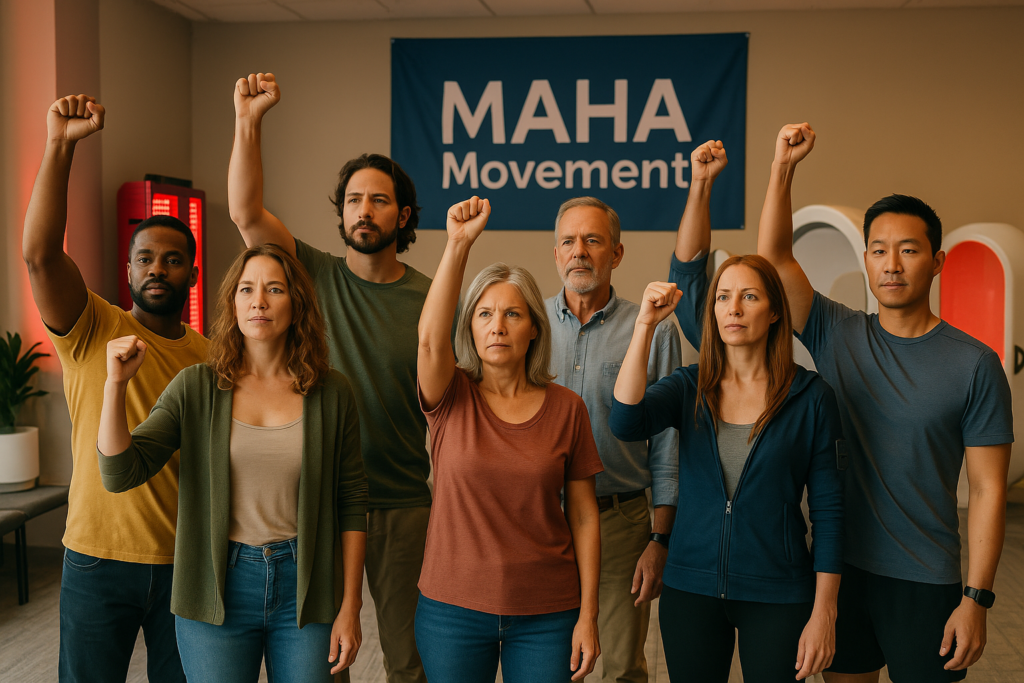
For many attendees, MAHA wasn’t just the name of a summit; it was a symbol of hope. It was a mission statement. People wore the logo on hats and water bottles and tattooed on their arms in temporary ink. They spoke about “health freedom” the way others talk about religion or voting rights. One woman described it as the first time she felt ownership over her body. Another said it reminded him that he didn’t have to wait for permission to feel better. In panels, in hallways, and even in the ice bath line, people used the phrase like a password. It wasn’t just about staying young. It was about staying in charge.
The vibe was half community, half crusade. They weren’t anti-science. They were anti-complacency. MAHA became a shorthand for self-responsibility, experimentation, and questioning everything you’ve been told about your own biology. The official events ended each night, but the meetups carried on in hotel rooms and rooftop lounges, fueled by mushroom elixirs and nootropics. They traded tips, blood panels, and protocols like baseball cards. This wasn’t wellness. It was a movement. And they were just getting started.
This article, 12 Wild Ways People Are Trying to Stay Young—From Snake Venom to Urine Therapy was first published on dailyfetch.net.


